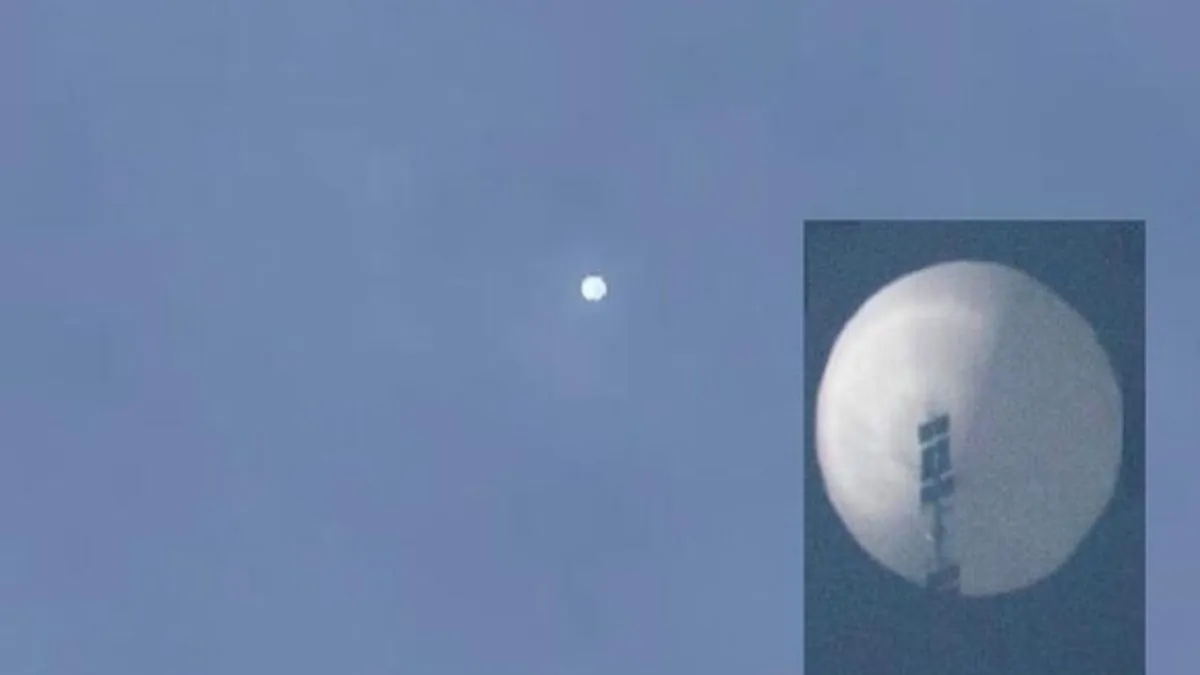Aiexpress – NORAD scrambled jets today to investigate a mysterious balloon flying over the airspace of the western United States. Experts are skeptical that it is a weather balloon due to its size, payload, and location. The balloon was intercepted over Utah after being spotted over Colorado drifting east. This incident is reminiscent of a similar occurrence last February when a balloon from China drifted over the United States. The U.S. military shot down the Chinese balloon, claiming it was a spycraft, while China insisted it was simply a weather balloon gone astray. Interestingly, last winter, the U.S. shot down four unidentified flying objects over a three-day period. One of these objects turned out to be a $12 hobbyist balloon.
NORAD will continue tracking the balloon as it travels south and east. According to an unnamed official from CBS News, the balloon is expected to be over Georgia tonight.
The FAA assured that the balloon does not pose a threat to flight safety.
According to NORAD, the balloon is currently floating at an altitude of 43,000 to 45,000 feet. NORAD has confirmed that the balloon is not capable of maneuvering and will continue to drift with the winds high above the Earth’s surface. The balloon appears to be made of Mylar material and is carrying an unidentified payload, roughly measuring two feet in size. The purpose of the payload remains unknown.
The origin of this balloon is unknown, and it’s unclear whether it belongs to a hobbyist.
The National Weather Service is the biggest user and launcher of balloons in North America, although hobbyists are also getting involved in this activity. To enhance the data obtained from weather satellites, the National Weather Service conducts at least two crucial balloon launches every day, and occasionally more when necessary, from its offices across the United States and its territories and possessions.
A radiosonde, a small and expendable instrument package, is carried by a weather balloon into the atmosphere to gather crucial data. Suspended about 80 feet below a large hydrogen-inflated balloon, the radiosonde ascends at a rate of approximately 1,000 feet per minute. Equipped with sensors, it measures profiles of pressure, temperature, and relative humidity. These sensor measurements are transmitted to a ground tracking antenna through a battery-powered radio transmitter. To determine wind speed and direction, the radiosonde’s position is tracked using GPS or a radio direction finding antenna. The received radio signals are then converted into meteorological values. The computer selects significant levels from this data, encodes them, and transmits them to data users. Additionally, the flight data with high vertical resolution, along with other data, is archived and sent to the NOAA National Climatic Data Center.
When the weather balloon is released, it starts off at a diameter of about 5 feet. As it ascends into higher altitudes, it gradually expands due to the difference in air pressure between the balloon and its surroundings. Once it reaches a diameter of 20 to 25 feet, the balloon bursts. To ensure a safe descent, a small parachute is attached to the radiosonde. This helps minimize any potential harm to people and property, considering the radiosonde is a lightweight device.

